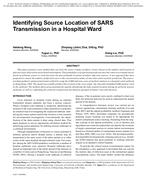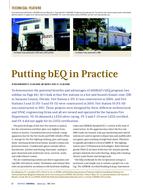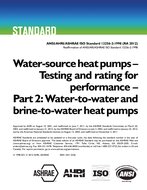Click here to purchase
Cooling towers are a common component of U.S. Department of Defense (DoD) facility infrastructure and are used to provide heat rejection for air conditioning, data center cooling, and refrigeration systems, among other applications. A novel cooling tower technology that has the potential to reduce makeup water demand without compromising cooling performance has been field tested at two Army facilities. Evaporative heat transfer within a cooling tower generally provides cooler and more consistent cooling performance compared to dry, air-cooled systems, which enables higher operating efficiencies and energy savings. However, water consumption adds to a cooling tower’s operating cost, as does ongoing water treatment that is required to prevent fouling, corrosion, and microbial growth. Hygroscopic cooling attempts to strike a better balance between conventional wet and dry cooling techniques by reducing the amount of makeup water needed for cooling and by reducing the chemical inputs needed to maintain the tower’s water quality. Operating data are analyzed for water savings as well as the longer-term sustainability of the mechanisms used for dissolved solids and microbial control. The project results in a methodology for DoD energy managers to 1) estimate the technology’s cost-saving potential, 2) understand its operations and maintenance requirements, and 3) identify potential integration strategies.
Citation: 2021 Virtual Conference Papers
Product Details
- Published:
- 2021
- Number of Pages:
- 9
- Units of Measure:
- Dual
- File Size:
- 1 file , 2 MB
- Product Code(s):
- D-VC-21-C062


